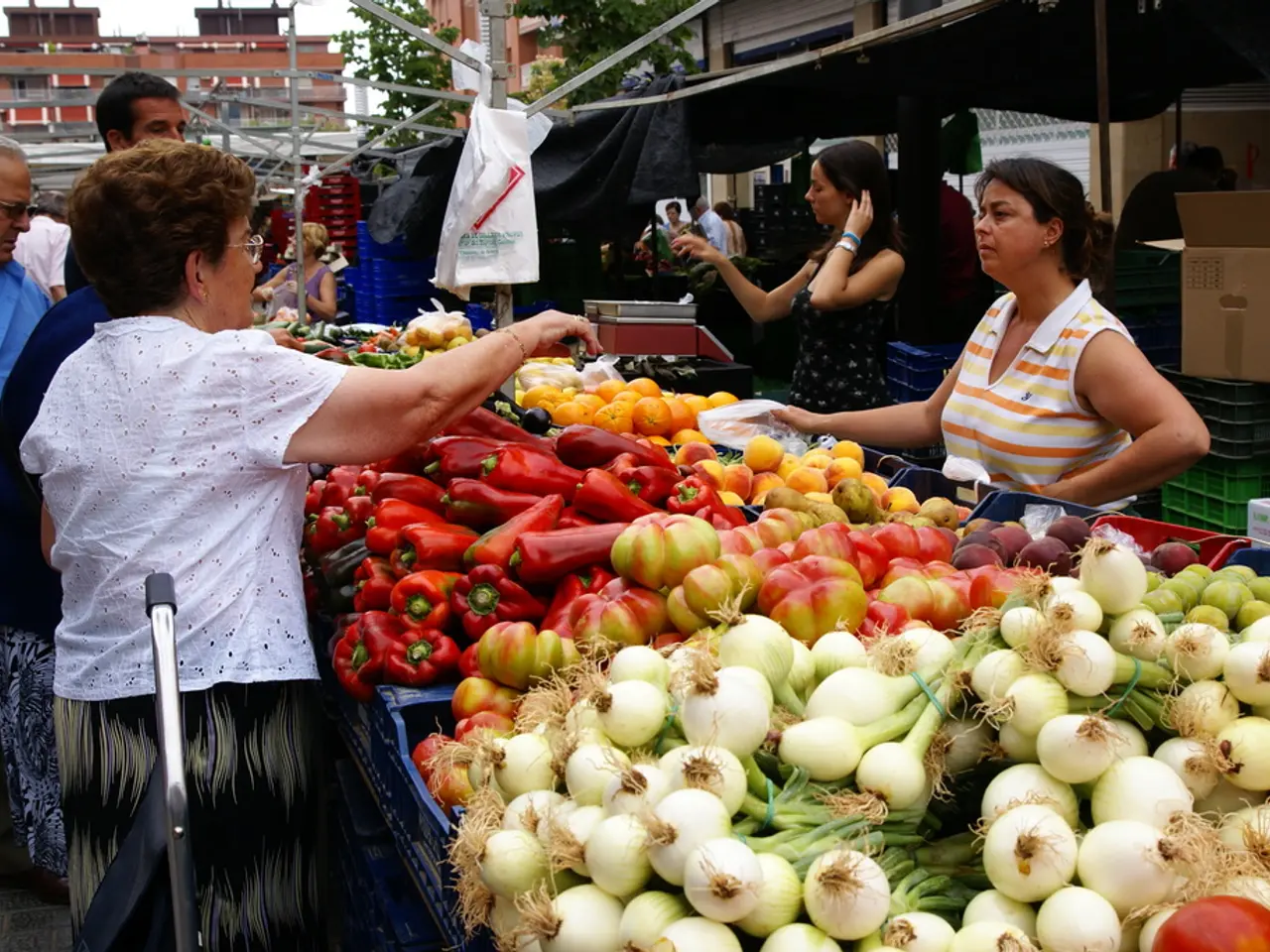Container Gardening: Edible Landscaping in Tight Spaces Explored
Foodscaping in container gardens is a popular trend that combines food production with ornamental gardening, creating aesthetically pleasing, productive spaces using pots or other containers. This approach is particularly useful for those with limited outdoor space, such as patios, balconies, decks, or small yards.
Choosing the Right Containers
For successful foodscaping, it's essential to use pots that are large and deep enough to allow healthy root growth. Most vegetables require containers that are at least 20 cm (about 8 inches) in diameter or larger, especially when planting multiple plants to ensure adequate spacing. Plastic or resin pots are a good choice for their lighter weight.
Selecting Compact Vegetable Varieties
Compact or small vegetable varieties are better suited to container environments and limited space. Examples of edible thrillers, the tallest plants in a container, include peppers, eggplant, broccoli, cauliflower, and grains like barley, oats, or wheat. Fillers, the plants that surround the thriller, can include angelonia, plectranthus, mustard, cabbage, kale, and ornamental flowers like pansy, snapdragon, or viola. Spillers, the plants that cascade over the edge of the container, can be sweet potato vine, trailing petunia, oregano, thyme, and creeping rosemary.
Ensuring Good Drainage and Quality Potting Mix
Containers need well-draining soil to prevent waterlogging and support plant health. Adequate drainage holes are necessary in containers for foodscaping. Rich organic matter and well-draining soil are recommended for foodscaping.
Positioning Containers Thoughtfully
Take advantage of container portability by placing them where they get sufficient sunlight (usually 6–7 hours per day) and protection from harsh winds. Climbing crops like beans or cucumbers can be grown up trellises or against existing fences.
Incorporating Sustainability
Choose plants that are well-adapted to your climate and water-wise practices to conserve resources, similar to xeriscaping principles, but focused on edible species. This approach allows maximizing limited outdoor spaces while being mindful of the environment.
Examples of Plants That Do Well in Container Gardens
Leafy greens like collards, kale, lettuce, Swiss chard, and spinach can grow in less than 6-8 hours of full sun. Root crops like carrots and beets can grow in partial sun. Other crops that do well when grown in containers include beans, blueberries, cucumbers, onions, peas, peppers, potatoes, radishes, strawberries, squash, and tomato. Broccoli, cauliflower, and cabbage can grow in partial sun.
Specialising in Culinary Gardening
Amy Grant, a professional chef and caterer with 30 years of gardening experience, specializes in culinary gardening. Her expertise lies in growing a variety of edible plants in containers, creating beautiful and productive foodscapes that bring both beauty and function to outdoor spaces.
By following these best practices, you can transform your limited outdoor space into a thriving foodscape, combining utility and ornamental value, resulting in a highly productive and visually appealing container garden.
- To create a successful foodscape in container gardens, it's crucial to select compact vegetable varieties for a better fit in your limited space, such as peppers, eggplant, broccoli, cauliflower, and kale.
- Incorporating healthy cooking practices doesn't only happen in the kitchen but can also apply to your foodscape, ensuring good drainage and using a quality potting mix designed for foodscaping.
- Enhance your foodscape's lifestyle and food-and-drink appeal by thoughtfully positioning your containers to get ample sunlight and protection from harsh winds, while also considering sustainability by choosing water-wise plants and implementing xeriscaping principles focused on edible species.





